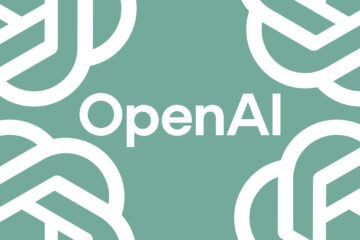Entrepreneurs and business owners usually know what type of products or services they’re going to offer and who they’re going to target.
But they often overlook the foundation that will ensure strong growth for the future—identity.
Defining a clear company identity helps separate you from the competition and engage with your customers at every touchpoint.
Brand identities are more than just a company logo or mission statement—your identity will resonate with your audience and define your brand.
Whether you’re launching a startup or rebranding an existing business, this guide will teach you how to define your brand from scratch.
The Easy Parts of Defining Your Company Identity
Lots of people think it’s hard to define a brand identity from scratch because they don’t know where to start. But this is actually easier than it appears on the surface.
Whether you realize it or not, you already have an idea for your brand identity in your head. Now it’s just a matter of taking that idea and turning it into a reality.
There are tons of great brand identity templates on the web that you can follow. These templates make it much easier to put your ideas in writing and even convey your identity using visuals.
Canva is one of my favorite tools for this.
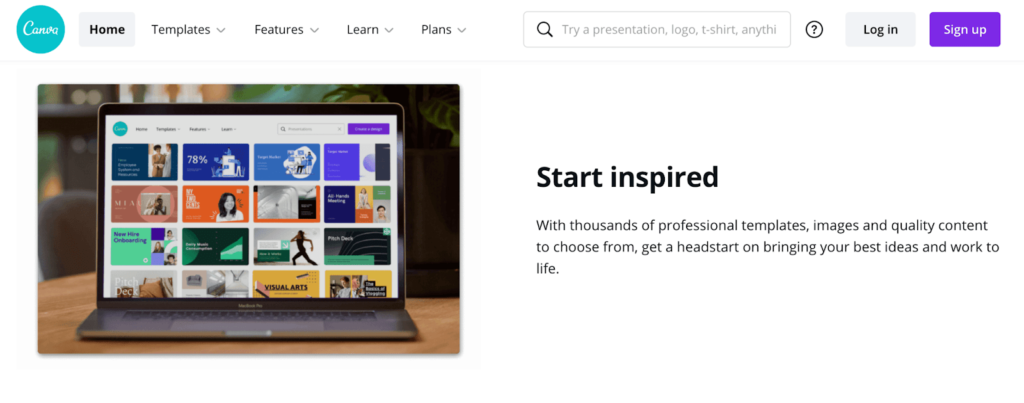
Canva is a web-based graphic design tool that allows anyone to create world-class visuals without any design experience. The platform has thousands of templates for presentations, social media, marketing materials, office materials, and more. So you can easily use it to define your identity internally and externally across multiple channels.
There are even specific templates designed for brand identity. The platform makes it easy to collaborate with others and share everything with ease.
Canva’s free plan comes with 250,000+ free templates, and the Pro plan starts at just $9.99 per month. You can try the Pro plan for free for 30 days.
Following by example is another easy part of defining your company’s identity from scratch. There are hundreds of brands across every industry that have great success by defining their identity.
You can use these different success stories to inspire your own identity.
The Difficult Parts of Defining Your Company Identity
While the concept of creating a company identity is simple, the actual implementation has its fair share of challenges.
A company identity is more than just a logo or a mission statement. It defines who you are as an organization, how you operate, and what type of impact you want to make in the world.
Think of your brand as a living, breathing individual with its own personality. It goes beyond taglines, slogans, and names—it must be actionable.
One of the hardest parts of defining your company identity is getting people to buy-in. Successful company identities start with people, from the highest-level executives all the way to entry-level employees working the register or answering the phones. Everyone must have a clear understanding of the company’s identity definition and apply its concepts on a daily basis.
From there, it eventually gets recognized by prospects and customers. This isn’t something that happens overnight. It’s an ongoing process and requires lots of effort.
It can be frustrating if people misunderstand your vision. But it’s also worth noting that company identities evolve over time. Determining whether or not it’s time to make changes can be difficult as well.
Some aspects of your brand identity will be out of your hands. Things like media attention or a viral video can create a certain perception of your company’s identity that may or may not align with your initial definition. When that happens, you can either resist or roll with the punches.
Step 1: Research Your Target Audience and Find Inspiration
Market research is a crucial step for things like business plans, product development, marketing campaigns, and more. But it’s also extremely important for defining your company’s identity from scratch.
If your identity doesn’t resonate with your target audience, it’s useless. Your identity needs to speak to them on a human level, so they want to support your brand.
You want to ultimately establish a persona for your company that consumers will relate to.
The market research for brand identity will differ from the research you’re doing for other purposes. In this scenario, you’re not trying to see whether or not the market will accept your product or service. Instead, you need to determine what feelings, emotions, and triggers will draw prospects to your brand.
Find Your Unique Selling Point
What makes your company different?
Think beyond the surface of products, services, or pricing. Try to find marketplace gaps in your industry that fulfill the wants or needs of your target audience. Is there something you can offer that other companies can’t? This thing is your Unique Selling Point (USP).
For example, let’s say you’re running a bakery. There could be dozens of other bakeries in the area selling the exact same products as you. But all of them might not sell gluten-free cupcakes using locally sourced products.
Appealing to dietary restrictions and supporting other locally owned businesses in your region could be the USP that’s the foundation for your company identity.
Start with this, then slowly continue to build from there.
Get Inspiration From Successful Leaders
Narrowing down your unique selling point and how it appeals to your target audience is just the beginning. Now you need to take that concept and use it to define your identity.
A sign on your door saying “we sell gluten-free cupcakes using locally sourced materials” isn’t enough.
How will you actually put this into action? Look to big names in different industries to see how they’ve defined their identities. See which ideas work well for your vision, and try to replicate that success.
Look at a global giant like Starbucks. Part of their brand identity is personalization and building relationships with their customers. One way they achieve this is by handwriting names on cups.
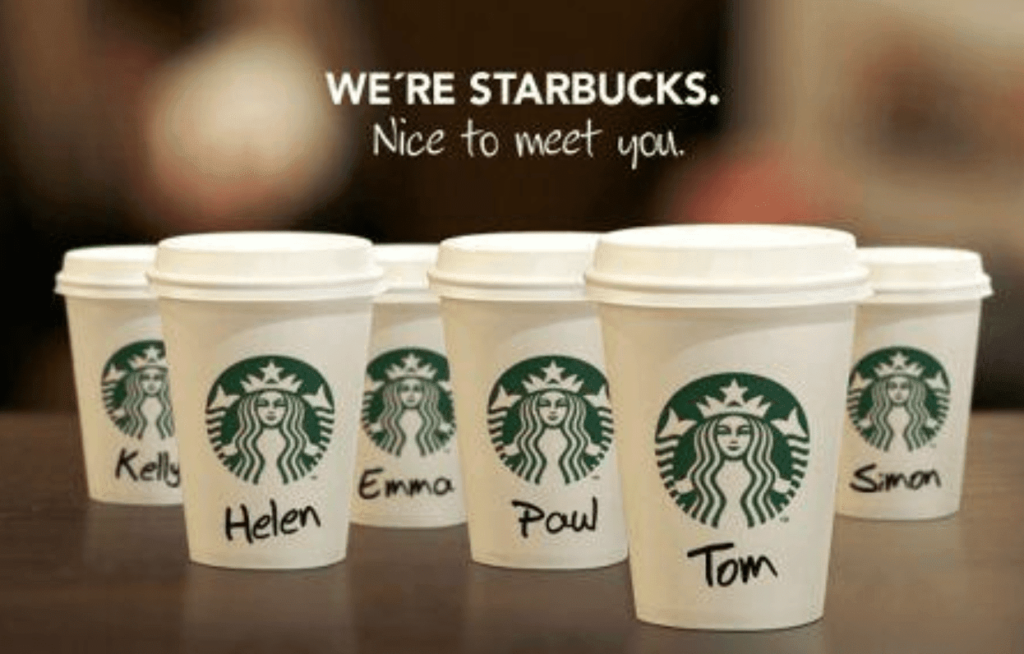
Even for a company with 30,000+ locations worldwide, this intimate touch provides that local coffeehouse feel for customers.
This identity can be found all over the Starbucks website and other branding materials. Check out this small excerpt from the website page about the company culture and values:
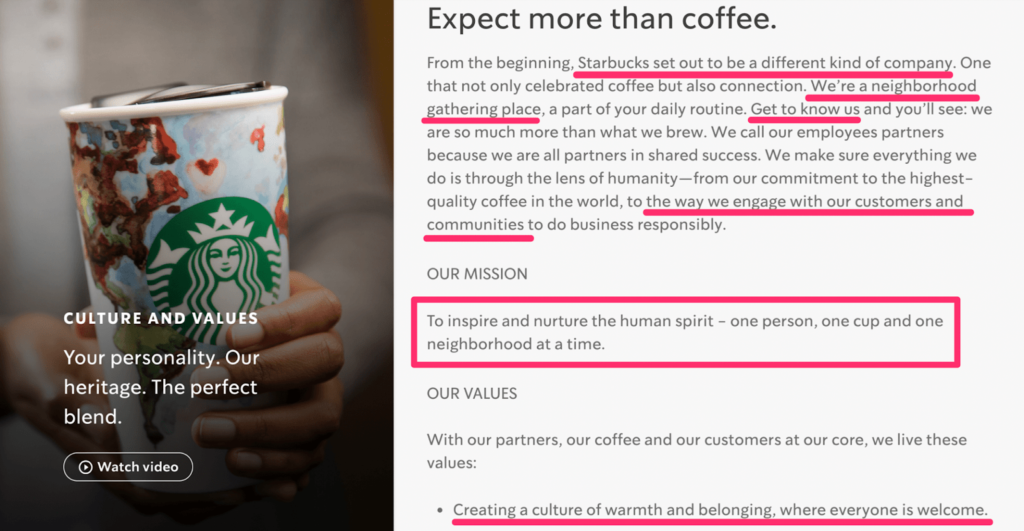
The highlighted passages all mirror the same identity portrayed by writing names on cups.
Now let’s circle back to the bakery example. You could follow the lead of Starbucks and put stickers or labels on your packaging with information about the local farms that the products were sourced from.
Maybe your blueberry muffins might use berries from a different farm than the carrots in your carrot cake, but you chose those two different farms for specific reasons.
This is just one example of how customer research and inspiration from others can help you start defining your company’s identity from scratch.
Step 2: Create Quality Copy and Visuals
After the first step, you should have a clearer vision of the identity you want to create. Now it’s time to create different visuals that showcase your identity.
Instead of starting with a blank canvas, head over to Canva and pick a brand identity template.
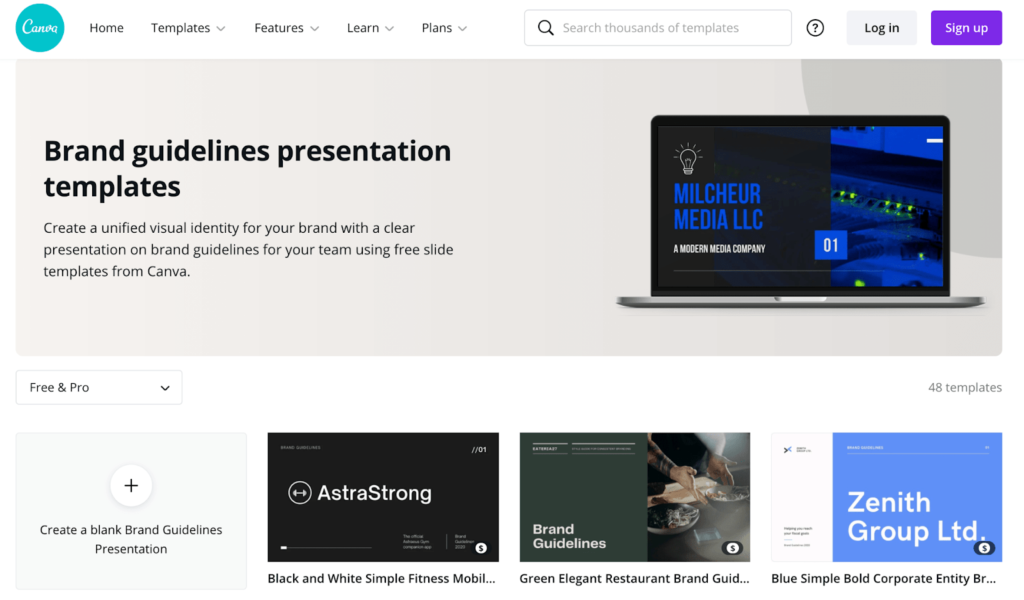
I like using Canva for this step because the templates are so versatile. They have brand identity templates for presentations, social media, marketing materials, and more.
Start out with a presentation, as this will force you to go through different steps to formalize the company identity.
From there, you can take that information and turn it into website content, social media posts, new hire onboarding materials, and other shareable content.
Another reason why I like Canva so much is it’s just so easy to use. I don’t have any graphic design experience, but I can easily navigate my way through the templates and customize everything with my own content.
To show you how easy it is to define your brand identity with Canva, I’ll walk you through an example using one of the templates.
Select a Template
Here’s a basic overview of Canva’s interface when you’re working with a template:
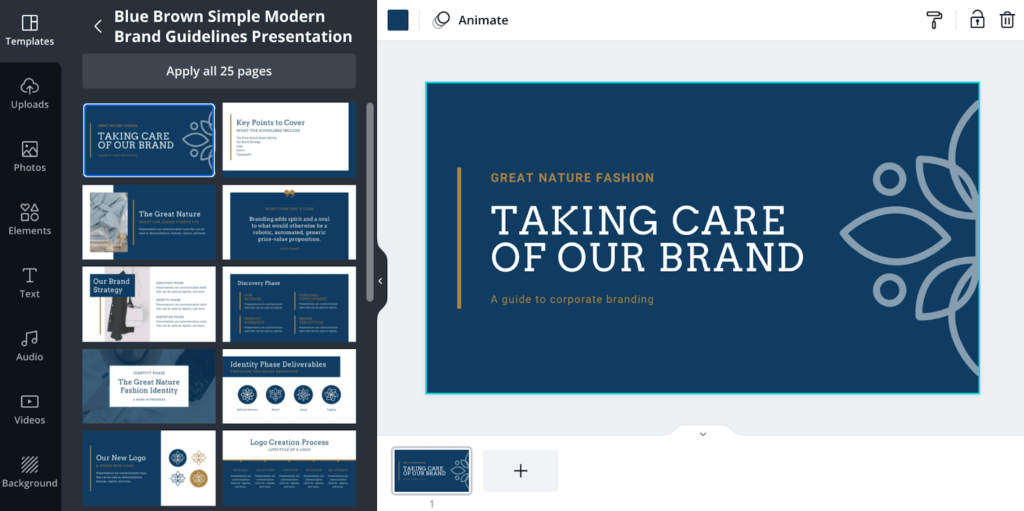
The template has 25 different pages in a brand guidelines presentation. You can go through each slide on the left side of the screen and just add the ones you want to include for your brand identity.
You won’t necessarily need all of them, but I encourage you to use as many as possible. This will force you to define various aspects of your company identity from different angles.
Define What Your Company Stands For
As you continue to go through these template pages, you’ll find different slides that help define your brand identity. Here’s a slide that essentially asks you to describe what your brand stands for in just a sentence or two.
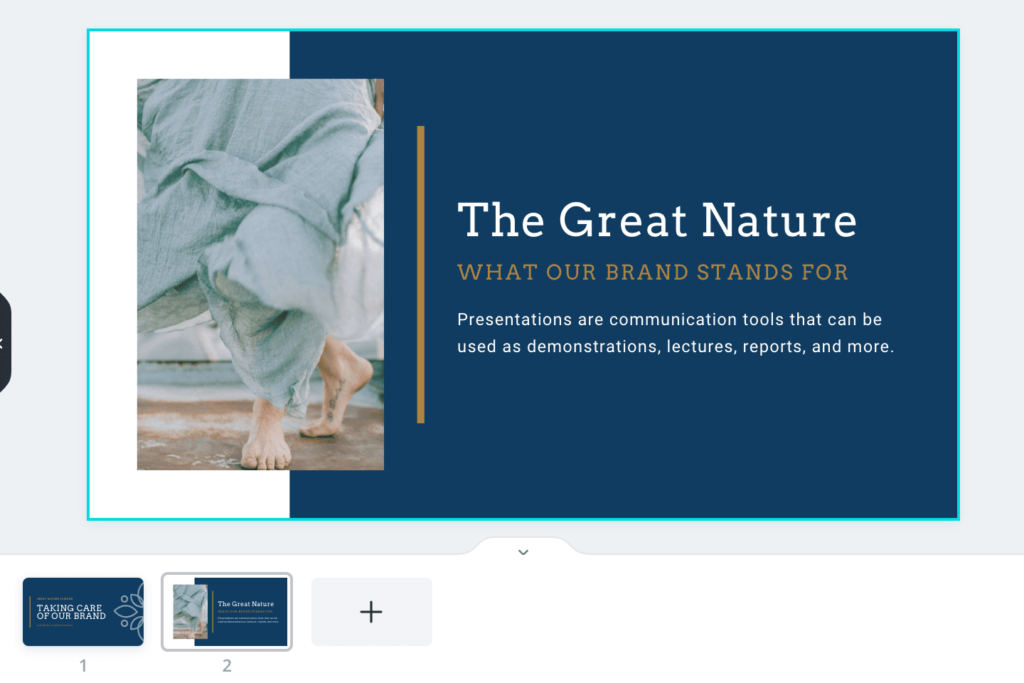
This next slide takes the identity phase one step further, getting even more specific with your mission statement, brand, values, and tagline.
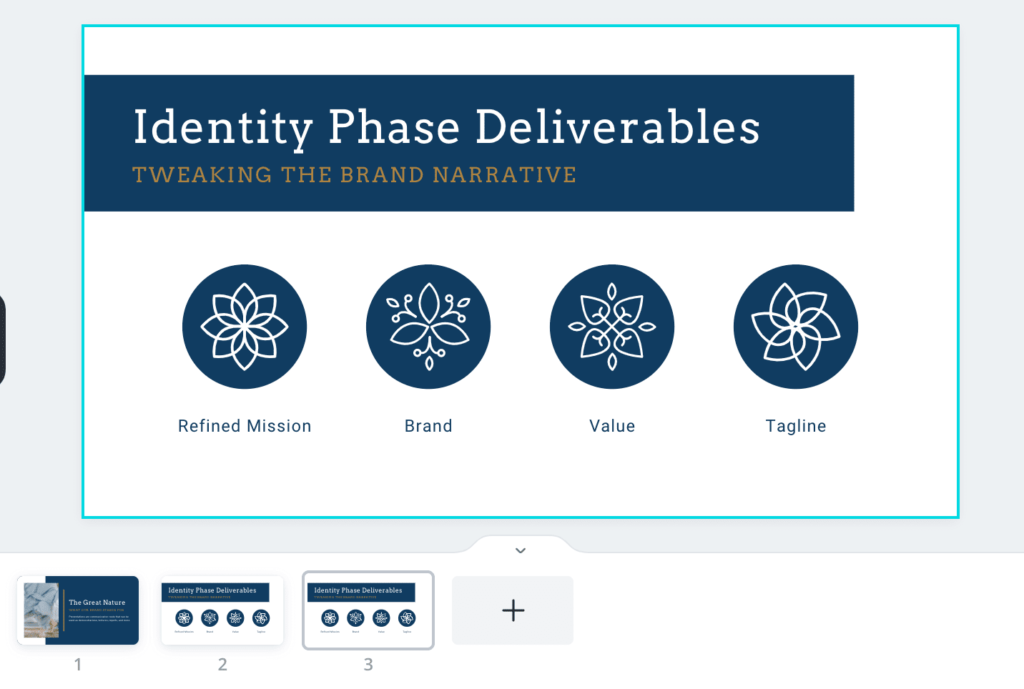
All of these slides are 100% customizable. So you just need to click on the text and fill it in with your own copy.
You can swap out the visuals for custom images as well.
Select Brand Colors and Typography
A brand’s identity can easily be conveyed using colors and fonts. The colors and typography of a tattoo shop or nightclub will likely be different from a brand selling dolls to five-year-old girls.
This Canva template walks you through the process by asking you to define your company’s main color, primary color, and complementary colors.
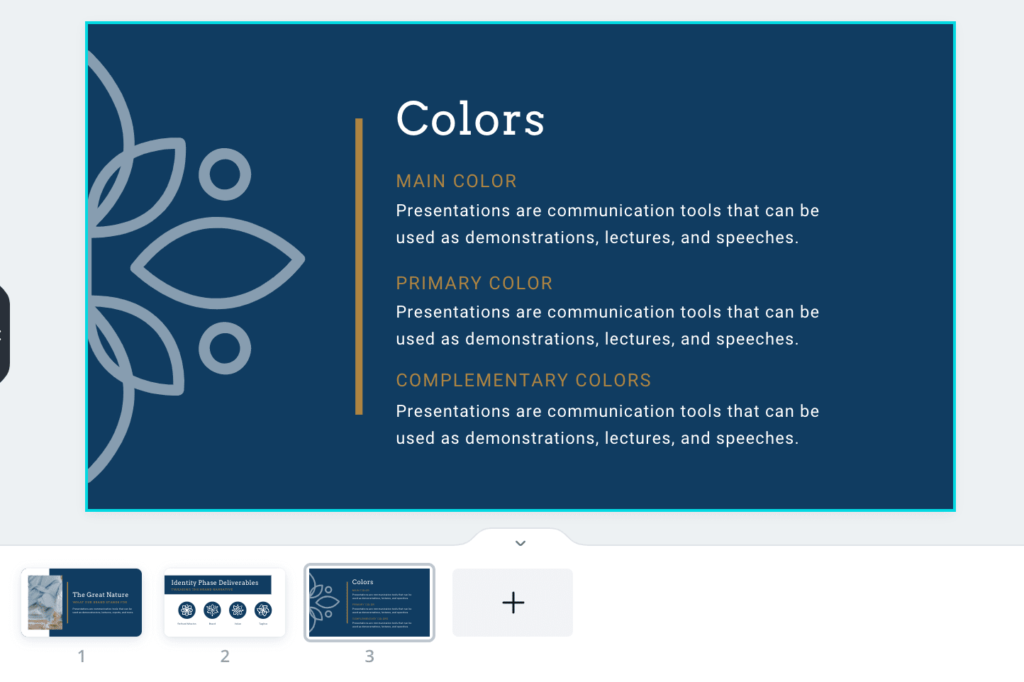
Once your colors have been established, continue using the template to define your typography.
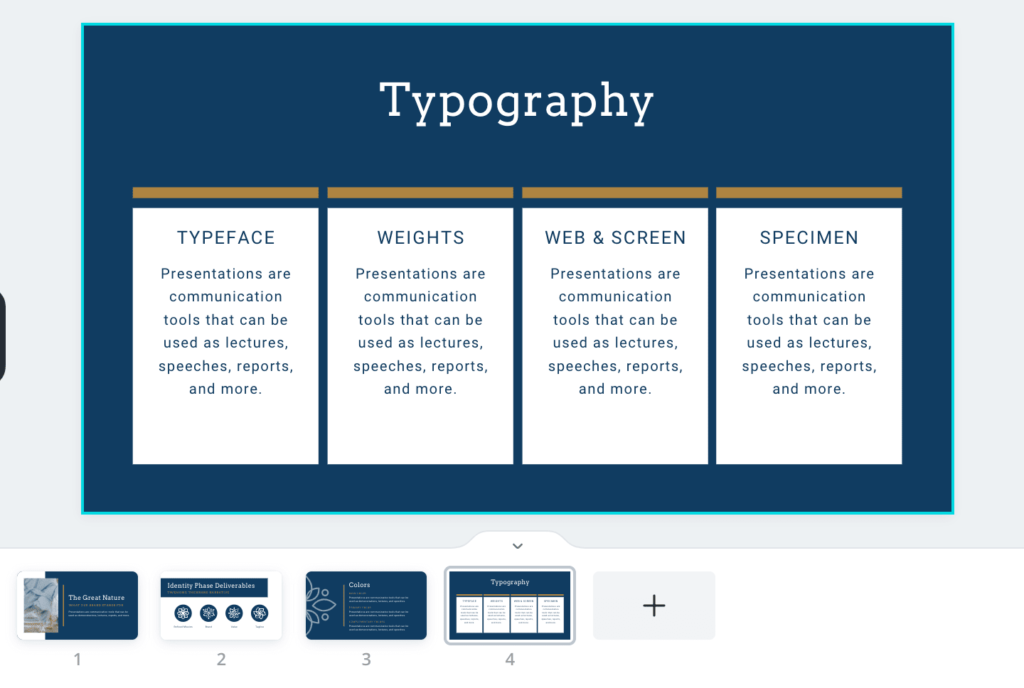
Again, just click on the text to edit the content with your unique brand identifiers.
Add a Face to Your Identity
Consumers don’t want to interact with a nameless, faceless company. By adding faces to your identity, it helps establish a personal connection between you and your customers.
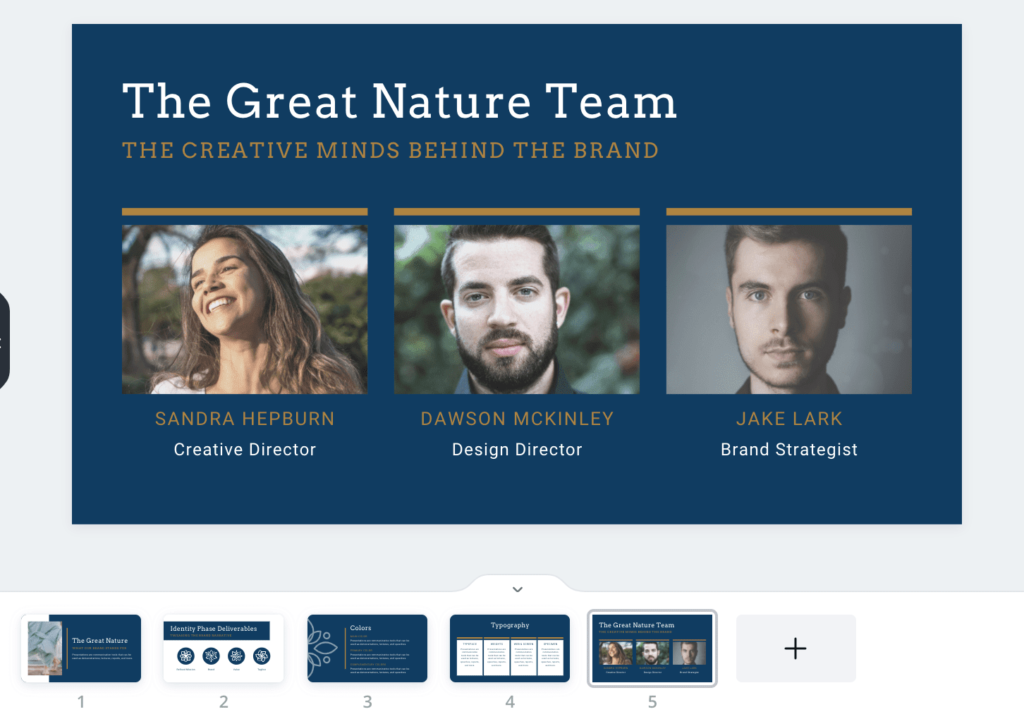
You can also include a unique bio for key players on your team.
Let’s stick with the bakery example we’ve been using throughout this guide. Maybe your head chef grew up on a local farm and learned to cook only using the materials harvested on-site. Or maybe your entire team is from the local area, reinforcing the idea of community and supporting small businesses.
Define Visual Requirements, Social Media Branding, and More
We’re not going to go through all 25 slides on the template. But this should give you a good understanding of what you can achieve with Canva.
Other brand identity components that you can use the template include:
- Logo requirements
- Logo variations
- Social media branding requirements
- Photography guidelines (cropping, lighting, filters, etc.)
- Brand hierarchy structure
- Brand strategy
Canva really lets you personalize all of this stuff with audio, visuals, charts, backgrounds, and so much more.
Step 3: Communicate and Share Your Company Identity
Once you’ve finished customizing your brand identity template, you can use that as your north star to operate. To do this effectively, you need to get everyone on the same page.
You need to share the identity with your team and make the identity visible to the public. The materials you use here will vary for each segment.
Sharing With Your Staff
For employees, you can simply share the presentation that you’ve already created using Canva. Once you’re done, just click the Share or Present icons at the top of the screen, depending on the channel you’re using.
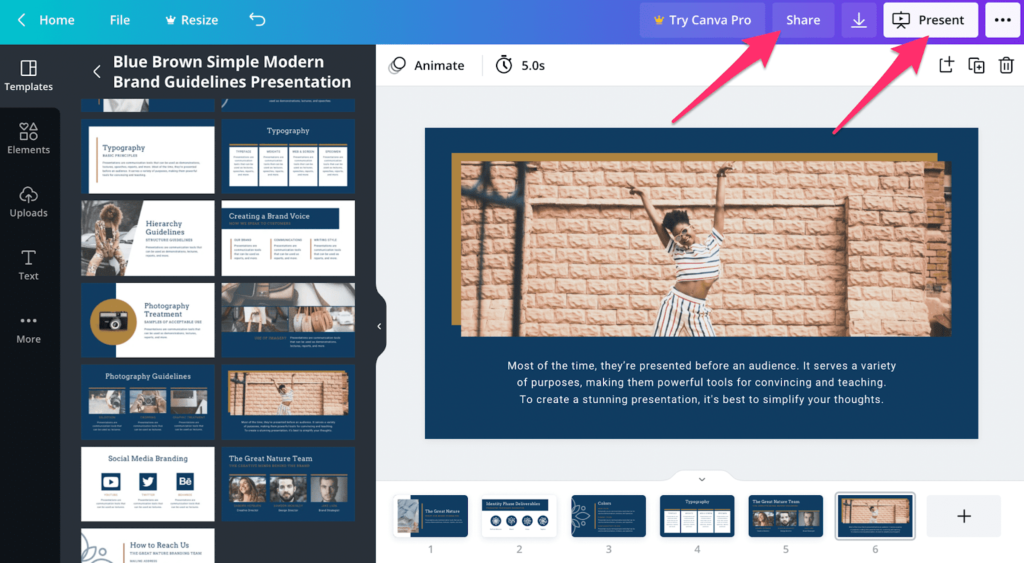
This type of presentation is great for onboarding new employees. It helps get everyone on the same page from day one, so they have a full understanding of your company identity.
If your employees can’t buy in, then you’re going to have trouble putting your identity to action in the real world. So ask for feedback and invite key players on your staff to collaborate with you as you’re working on this.
Sharing With Customers
Putting your brand identity in the public eye is a bit more challenging. Customers aren’t going to watch a slideshow or presentation to find out who you are. So you’ll need to get creative here.
Fortunately, you can still use Canva for this. Use your initial brand identity template as a guide as you’re creating other materials for your website, social media platforms, storefront signage, etc.
Canva has templates for everything from posters to flyers, business cards, and more.
Be Consistent
Another crucial aspect of defining your company’s identity is consistency. The message and actions should be the same across all of your pages and channels.
This helps drive the message home, and it resonates with your audience.
Here’s an excellent example of consistency applied on Vuori’s website.

Vuori is a clothing brand, which is obviously a highly competitive space. But their homepage stands out by appealing to an audience that’s interested in nature and travel.
Check out some other screenshots from the website that emulate the same identity.

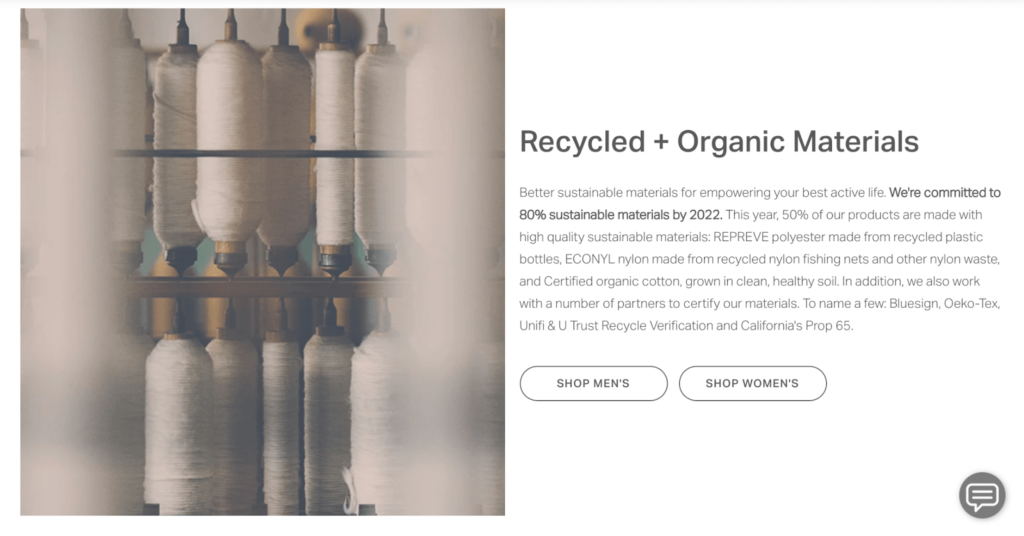

Every page of the website is plastered with visuals and copy that drive home Vuori’s identity. This really helps resonate with both current and prospective customers.
The identity is consistent across all channels, including social media, email, packaging, and in-person storefronts.
As previously mentioned, it’s always a good idea to follow the lead of other successful brands. You can use this as inspiration for your own company’s identity.
